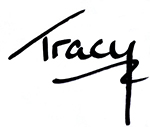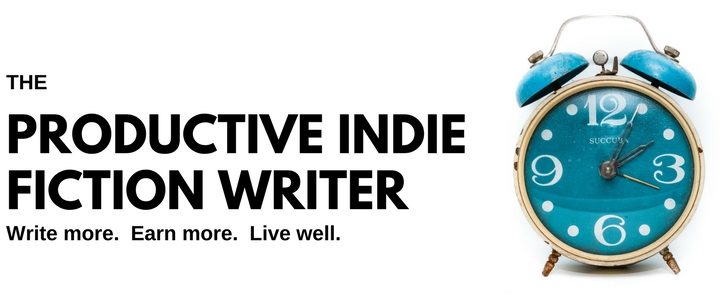
Discipline tends to get a bad rap these days.
In productivity circles, it is equated to white-knuckling your way through tasks with iron-jawed determination, which will naturally and absolutely end in failure.
In diet circles, discipline is the same as holding your teeth together, sitting on your hands and mutely shaking your head “no” when birthday cake is thrust at you…also doomed to failure–maybe not this time around, or the next, but inevitably you will cave because the human psyche is weak and discipline is artificial.
But is it?
And is discipline really the evil monster on your shoulder, making you do what you don’t want to do? Always?
Ballet Dancers’ Discipline Is Fascinating
The physical discipline of dancers of all stripes interests me.
In particular, because I know that world a little better, ballet dancers tend to blow my mind with their dedication and iron-hard willpower…that you can only ever see if you turn your head and glimpse it from the corner of your eye. There is a grace and calmness about their discipline that is admirable.
If discipline is a sliding scale moving from physical discipline to mental discipline, ballet dancers would be at the far opposite end to writers. All our demons are in our heads. Our body just comes along for the ride.
On the other hand, if writers could build some of the physical discipline of dancers into their lives, along with their mental stamina, I think we would all benefit immensely.
Theresa Farrell’s Take
A perfect example of this is a video I found on YouTube, Munchies’ “Counting Calories With A Ballerina“, which sucks in your attention for more reasons than the theme of the video. Theresa Farrell speaks in the opening minutes of the video about ballet being the perfect blend of physical and mental discipline, although I suspect the physical discipline comes first and the mental discipline comes along for the ride–the opposite of writers.
Then There’s The Intimidating Ms. Tharp

For the same reason, I love the introduction chapter of Twyla Tharp’s The Creative Habit, where she says:
After so many years, I’ve learned that being creative is a full-time job with its own daily patterns. That’s why writers, for example, like to establish routines for themselves. The most productive ones get started early in the morning, when the world is quiet, the phones aren’t ringing, and their minds are rested, alert, and not yet polluted by other people’s words. They might set a goal for themselves—write fifteen hundred words, or stay at their desk until noon—but the real secret is that they do this every day. In other words, they are disciplined. Over time, as the daily routines become second nature, discipline morphs into habit.
It’s the same for any creative individual, whether it’s a painter finding his way each morning to the easel, or a medical researcher returning daily to the laboratory. The routine is as much a part of the creative process as the lightning bolt of inspiration, maybe more. And this routine is available to everyone.
Tharp is a celebrated American dancer and choreographer with some impressive credits to her name, on stage, in film, and books, too. Her professionalism and discipline seeps onto every page, so much so that some reviewers call her “didactic”. I think she is merely speaking the way she truly thinks, warts and all, honed from her years as an active dancer.
Although Tharp is speaking about creativity in the quote above, notice the use of the words “routine” and “habit” and “daily patterns”.
Tharp further adds:
I will keep stressing the point about creativity being augmented by routine and habit. Get used to it. In these pages a philosophical tug of war will periodically rear its head. It is the perennial debate, born in the Romantic era, between the beliefs that all creative acts are born of (a) some transcendent, inexplicable Dionysian act of inspiration, a kiss from God on your brow that allows you to give the world The Magic Flute, or (b) hard work.
If it isn’t obvious already, I come down on the side of hard work. That’s why this book is called The Creative Habit. Creativity is a habit, and the best creativity is a result of good work habits. That’s it in a nutshell.
Direct, as I said.
White-Knuckle Discipline Is Counter-Productive
You’ll run out of oxygen if you hold your breath too long while forcing yourself to do whatever it is you think you must.
Over the long term, discipline won’t help you get through all your work, day after day.
I don’t think all discipline, however, is evil.
The One Really Good Use for Discipline
Discipline—making yourself do what you said you were doing to do, at the time you said you were going to do it—has one really good use: when acquiring new habits.
When habits are not yet ingrained, it requires discipline to complete them because you can’t complete them on autopilot.
However, there’s no point in making your new habit too ambitious: I’m going to write 10,000 words every day for 90 days, no excuses!!! Or; I’m going to run a mile on the treadmill every day after writing. Or; I’m going to walk a minimum of 10,000 steps every single day without excuses.
Without an ingrained, already established habit of writing or running or walking (or whatever) to back up these admirable, but overhwelming ambitions, you’re just asking to fail.
Tiny Habits is Where You Start
If the habit is small enough; (10 minutes worth of writing per day, 5 minutes on the treadmill after every chapter; 150 steps at the top of every hour), it only requires a modicum of discipline to complete the habit each time, until the habit is established and discipline is no longer required.
But until the habit is acquired, discipline will get you through. You don’t need a lot of discipline to set up tiny habits. That’s the point of making them tiny. But you do need some discipline to execute them every time until they’re ingrained.
Once they’ve become habits, you can slide the scale upwards (slowly!) until you’re hitting those super-ambitious goals every time out of the gate.
Stop Thinking Of Discipline As A Bad Thing
Discipline is like a muscle. You can acquire more of it with practice.
Channel the elegant discipline of dancers to get you through the first few minutes of your new habit.
You can use it judiciously to help you—as Twyla Tharp says—acquire the creative habit. And there’s nothing negative about that!

Write More, Faster Than Ever Before | Are You Prolific?
Editing Your Next Novel? Mark Posey offers fast, writer-friendly edits with zero drama. Check out services »
